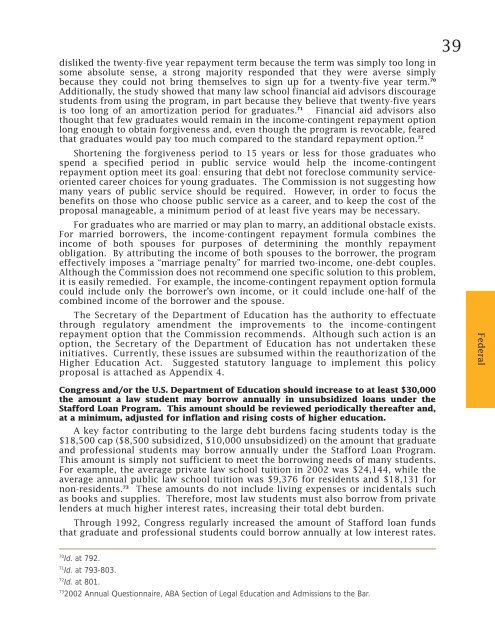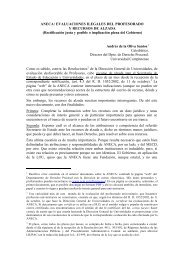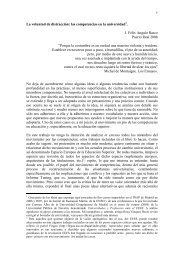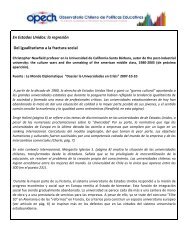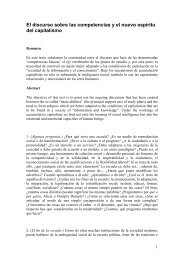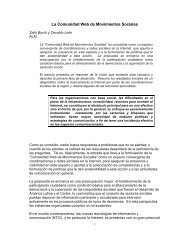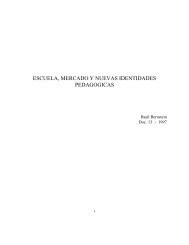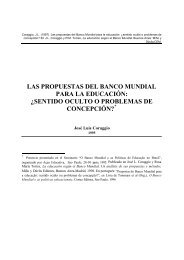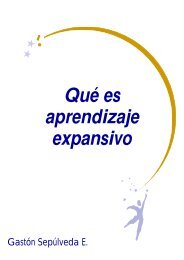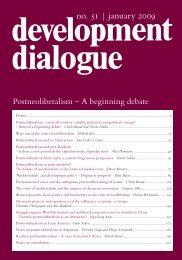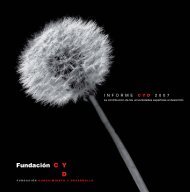Lifting the Burden: Law Student Debt as a Barrier to Public Service
Lifting the Burden: Law Student Debt as a Barrier to Public Service
Lifting the Burden: Law Student Debt as a Barrier to Public Service
Create successful ePaper yourself
Turn your PDF publications into a flip-book with our unique Google optimized e-Paper software.
disliked <strong>the</strong> twenty-five year repayment term because <strong>the</strong> term w<strong>as</strong> simply <strong>to</strong>o long insome absolute sense, a strong majority responded that <strong>the</strong>y were averse simplybecause <strong>the</strong>y could not bring <strong>the</strong>mselves <strong>to</strong> sign up for a twenty-five year term. 70Additionally, <strong>the</strong> study showed that many law school financial aid advisors discouragestudents from using <strong>the</strong> program, in part because <strong>the</strong>y believe that twenty-five yearsis <strong>to</strong>o long of an amortization period for graduates. 71 Financial aid advisors alsothought that few graduates would remain in <strong>the</strong> income-contingent repayment optionlong enough <strong>to</strong> obtain forgiveness and, even though <strong>the</strong> program is revocable, fearedthat graduates would pay <strong>to</strong>o much compared <strong>to</strong> <strong>the</strong> standard repayment option. 72Shortening <strong>the</strong> forgiveness period <strong>to</strong> 15 years or less for those graduates whospend a specified period in public service would help <strong>the</strong> income-contingentrepayment option meet its goal: ensuring that debt not foreclose community serviceorientedcareer choices for young graduates. The Commission is not suggesting howmany years of public service should be required. However, in order <strong>to</strong> focus <strong>the</strong>benefits on those who choose public service <strong>as</strong> a career, and <strong>to</strong> keep <strong>the</strong> cost of <strong>the</strong>proposal manageable, a minimum period of at le<strong>as</strong>t five years may be necessary.For graduates who are married or may plan <strong>to</strong> marry, an additional obstacle exists.For married borrowers, <strong>the</strong> income-contingent repayment formula combines <strong>the</strong>income of both spouses for purposes of determining <strong>the</strong> monthly repaymen<strong>to</strong>bligation. By attributing <strong>the</strong> income of both spouses <strong>to</strong> <strong>the</strong> borrower, <strong>the</strong> programeffectively imposes a “marriage penalty” for married two-income, one-debt couples.Although <strong>the</strong> Commission does not recommend one specific solution <strong>to</strong> this problem,it is e<strong>as</strong>ily remedied. For example, <strong>the</strong> income-contingent repayment option formulacould include only <strong>the</strong> borrower’s own income, or it could include one-half of <strong>the</strong>combined income of <strong>the</strong> borrower and <strong>the</strong> spouse.The Secretary of <strong>the</strong> Department of Education h<strong>as</strong> <strong>the</strong> authority <strong>to</strong> effectuatethrough regula<strong>to</strong>ry amendment <strong>the</strong> improvements <strong>to</strong> <strong>the</strong> income-contingentrepayment option that <strong>the</strong> Commission recommends. Although such action is anoption, <strong>the</strong> Secretary of <strong>the</strong> Department of Education h<strong>as</strong> not undertaken <strong>the</strong>seinitiatives. Currently, <strong>the</strong>se issues are subsumed within <strong>the</strong> reauthorization of <strong>the</strong>Higher Education Act. Suggested statu<strong>to</strong>ry language <strong>to</strong> implement this policyproposal is attached <strong>as</strong> Appendix 4.Congress and/or <strong>the</strong> U.S. Department of Education should incre<strong>as</strong>e <strong>to</strong> at le<strong>as</strong>t $30,000<strong>the</strong> amount a law student may borrow annually in unsubsidized loans under <strong>the</strong>Stafford Loan Program. This amount should be reviewed periodically <strong>the</strong>reafter and,at a minimum, adjusted for inflation and rising costs of higher education.A key fac<strong>to</strong>r contributing <strong>to</strong> <strong>the</strong> large debt burdens facing students <strong>to</strong>day is <strong>the</strong>$18,500 cap ($8,500 subsidized, $10,000 unsubsidized) on <strong>the</strong> amount that graduateand professional students may borrow annually under <strong>the</strong> Stafford Loan Program.This amount is simply not sufficient <strong>to</strong> meet <strong>the</strong> borrowing needs of many students.For example, <strong>the</strong> average private law school tuition in 2002 w<strong>as</strong> $24,144, while <strong>the</strong>average annual public law school tuition w<strong>as</strong> $9,376 for residents and $18,131 fornon-residents. 73 These amounts do not include living expenses or incidentals such<strong>as</strong> books and supplies. Therefore, most law students must also borrow from privatelenders at much higher interest rates, incre<strong>as</strong>ing <strong>the</strong>ir <strong>to</strong>tal debt burden.Through 1992, Congress regularly incre<strong>as</strong>ed <strong>the</strong> amount of Stafford loan fundsthat graduate and professional students could borrow annually at low interest rates.39Federal70Id. at 792.71Id. at 793-803.72Id. at 801.732002 Annual Questionnaire, ABA Section of Legal Education and Admissions <strong>to</strong> <strong>the</strong> Bar.


